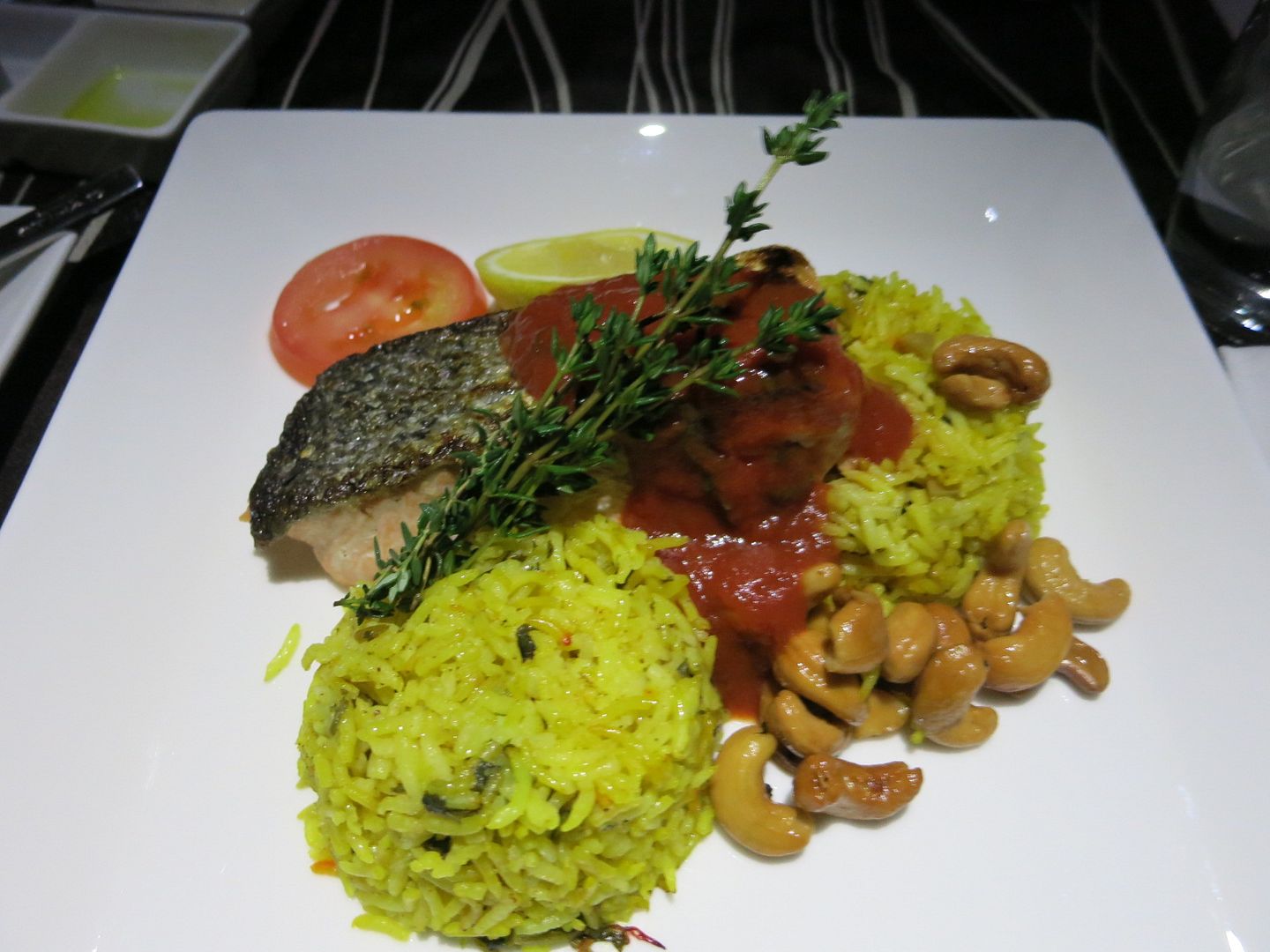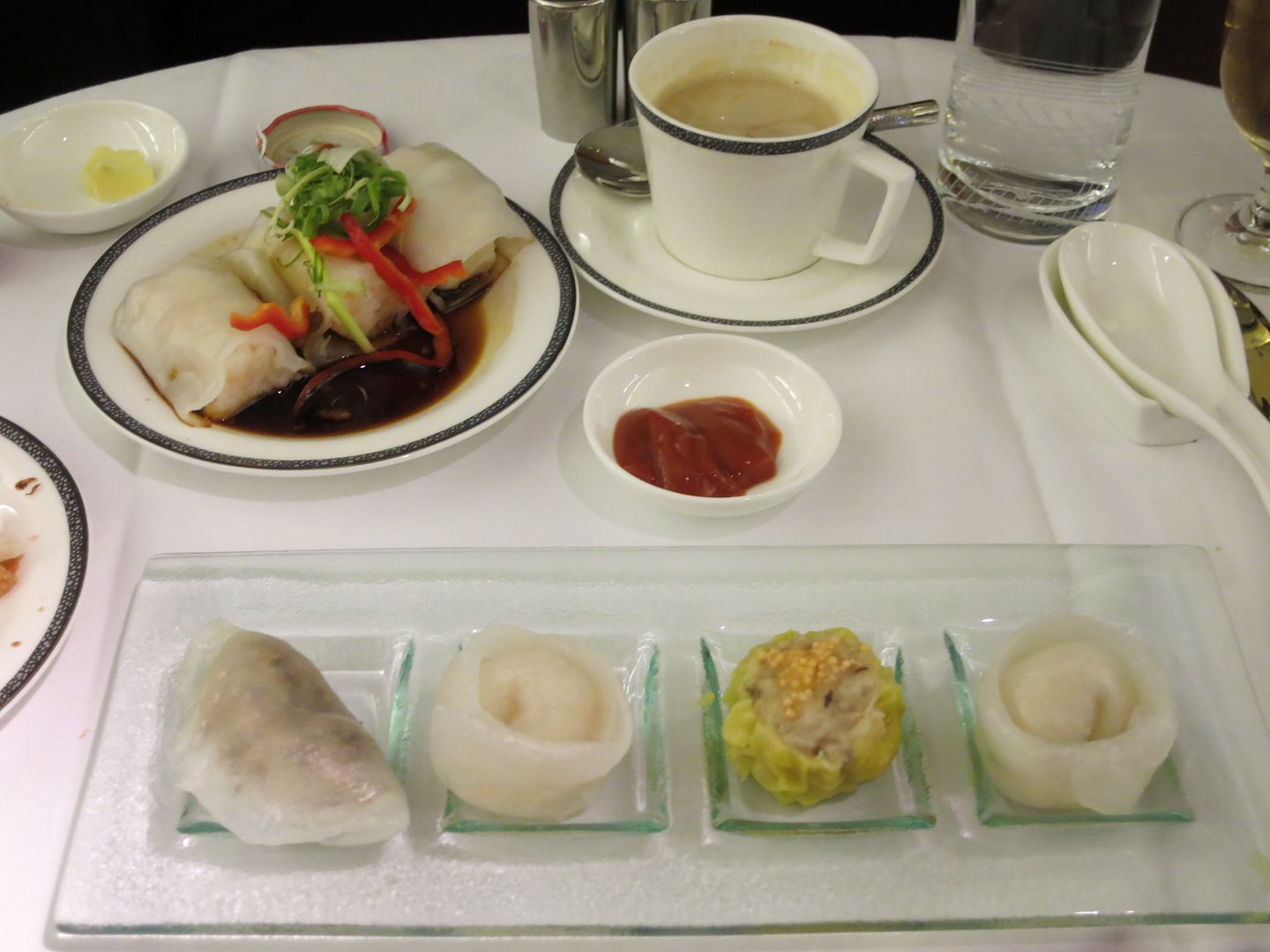Update: (November 12 7:15pm This post was based on an interview published in the Phoenix New Times with an individual identified as in charge of designing onboard premium cabin menus for US Airways. I’ve since learned that he is not currently an employee there. As a result, it’s not fair to assign weight to his comments as indicative of current thinking at the airline.
In a surprisingly honest piece, we get “Nathan Brown, Menu Designer for US Airways, on What It Takes to Make Airplane Food”
After culinary school, Nathan Brown worked at The Phoenician, at a golf course, and at Pointe Hilton Squaw Peak as their executive sous chef.
He creates US Airways premium cabin inflight menus:
The job entails crafting four lunch and four dinner menus for the airline; the different menus are rotated throughout the year through different regions and routes. Each menu includes an appetizer, salad, entrée, and dessert, with several entrée options for each menu.
The author of the piece is impressed by the number of different items this entails, but it strikes me as rather very few.
Unlike the aspirations of the better world carriers, US Airways doesn’t even set out to do five star meals.
He also works with a completely different set of restrictions than a restaurant chef. For one, there’s budget — though Brown points out that international flight menus include a beef tenderloin option.
“You can’t do five star food,” the chef admits, adding that they do try to give the menu “some sort of fluency.”
They pre-cook the food for the flight attendant to finish off, and assume it’ll be left in the oven too long.
The bigger issue might be space. There’s no “kitchen” per se, on the plane so he has to create food that can be pre-cooked and finished in the on-board electric oven. Brown says the goal is to create “fool-proof” dishes that won’t be completely ruined if a flight attendant leaves the dish in there for too long.
They’re also not going to vary the menu seasonally.
Ingredients also have to be accessible all over the world and almost all year-round, so don’t expect any farm-to-table menus from this chef soon.
He really likes the domestic first class short rib with risotto and Brussels sprouts. I believe our last President referred to this as “the soft bigotry of low expectations.”
Given that his menus include a dessert he must be at fault for the inedible cookie.
He’s never traveled to Southeast Asia and wishes he could go there, but US Airways doesn’t have any flights. He may not realize that American Airlines flies to Hong Kong, from which it’s quite easy and reasonably inexpensive (he could pick up some British Airways Avios and confirm an award ticket, if he wasn’t confident of flying as an employee on a oneworld partner) to hit several destinations in the region. US Airways of course used to be a Star Alliance member, and he didn’t take advantage of the opportunity to fly United, Singapore, or Thai Airways (or Asiana, Air China, etc.).
By contrast, here’s some airline food they don’t serve.
 Lobster Pad Thai, Thai Airways first class, Bangkok – Beijing
Lobster Pad Thai, Thai Airways first class, Bangkok – Beijing Lobster thermidor, Singapore first class, Tokyo – Singapore
Lobster thermidor, Singapore first class, Tokyo – Singapore Salmon biryani, Etihad first class, Washington Dulles – Abu Dhabi
Salmon biryani, Etihad first class, Washington Dulles – Abu Dhabi Dim sum, Singapore Airlines first class, San Francisco – Hong Kong
Dim sum, Singapore Airlines first class, San Francisco – Hong Kong- You can join the 40,000+ people who see these deals and analysis every day — sign up to receive posts by email (just one e-mail per day) or subscribe to the RSS feed. It’s free. You can also follow me on Twitter for the latest deals. Don’t miss out!


Gary, does Boarding Area not have a spell check feature for it’s blogs? I just typed Honesy into Yahoo email, and it immediately flagged it as misspelled. In fact, typing it in this comment box, it was flagged as misspelled.
Gary, I too am pretty disappointed by your lack of spellcheck use that seems to have accelerated in the last few weeks.
Gary, I don’t understand the incessant need to bash US Airways first class food. Maybe it’s marginally less appealing than AA’s was to some people, but if we’re all honest with ourselves, it’s perfectly fine. I eat it multiple times a week and it’s totally acceptable. Please, just give it a rest – no need to manufacture hype around something that really isn’t an issue.
Also, how is it fair to compare domestic first class food (on any airline) to international first class food on Singapore/Thai/Etihad, etc. You’re insinuating that US Airways is somehow deficient because they don’t serve those meals – but neither does Delta, United, legacy AA, etc. C’mon.
Did a quick search on singaporeair.com and expedia.com for SIN-HKG for a mid-January round trip, Saturday night stay
SQ is charging something like $600 USD for Y (more than double what Tigerair is charging, treble what Jestar Asia is charging).
Prices in the USA for airlines like AA/US, UA, AS, DL for a comparable ~1500 mile trip between two major cities with large populations and competitive carriers on a nonstop months out (so the cabin’s not even close to full) would be much closer to the $200-$300 AK and TR are charging to the $600 SQ is charging.
Those SQ meals and premium wines/scotches you get in premium classes are awfully nice (I’ve had my share of them on SQ/CX intra-Asia), but they are in part subsidized by higher coach fares, which is why TR, JQ, AK and all are devouring marketshare from SQ, CX etc. by eating away at the economy pax that make the route frequencies work. You make a lot of profit on C/F, but you need lots of Y to fly the plane at all.
Saw article in the Facebook I Love 1st Class group.
Shocked at how low brow and defeated it all sounded. His Linkedin says he started the position in May of 2013, so he definitely influenced what we see today given it was 12 months lead time.
Interesting that the article has now been completely removed from the website.
Here’s to hoping they seriously rethink the main courses they came up with, all borrowed from the US Airways side.
It is sad when honesty is surprising.
Gary lets get Honest here, AA’s food pre merger wasn’t all that good, infact, what was served before the merger was served in Y pre 9/11. Infact the food on the A321T’s in F is a joke compared to what was served on the DC-10’s and 767 back in the day… Air travel isn’t what it was and when you have people looking for the lowest price to travel something needs to be cut.
You and the arm chair CEO’s over at FT who keep bashing Parker and his cuts have to get real, it’s a business that needs to make money. I’m not too sure who fly’s for the food anyhow.
What happened to the Gary that used to give us rational, common-sense advice and tips? The photos of the international F/J meals while demeaning a former US employee for not traveling to Asia is just bizarre. The snobbery is sad to see and makes me wonder if Gary has grown too big for his own britches?
It’s not just US. All domestic F/J food is mediocre at best, and inedible much of the time. International Y is no better. And domestic Y food doesn’t exist in the U.S. (although overseas most carriers seem to be able to provide something decent, even in Y). It’s the complete lack of competition, and the capitulation of the Department of Justice.
When there was competition, things worked. In 1966-68, I flew ORD-LAN on UA to college. It was a DC-6, all A class. Flight was one hour long, and the dinner served was choice of filet or lobster tail. Fare cost with a UA 12/21 Club (Student Standby) card: $7.85.
With no competition, no incentive to get better. Last year, my wife and I flew AA SCL-MIA in Y. (Won’t ever do this again.) Despite being international, food was completely inedible, and difficult to identify. Fare cost: More than $1,000 each.
Every few months I read a story along the lines of, “food in flight is very different, all these restrictions on what we can do, it’s just not possible to offer great food in the air.” I fly often and get it that the galley of an airliner is different from the kitchen of a top-notch restaurant. Yet I’ve flown often enough on foreign carriers to know that this isn’t the whole story. The best food I’ve had in the air is just like the best food I’ve had on the ground – high-quality ingredients, well prepared (and processed/heated out of recognition). Turkish manages to cater very decent, tasty, presentable meals even in coach, for example. In the end, if the airlines want to – and most importantly if they are willing to pay the extra $2 per passenger – they can serve decent, even good to great food.
Meant NOT processed/heated out of recognition, obviously.